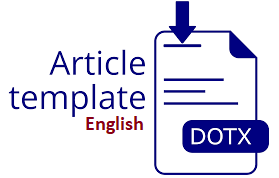Data Mining Memprediksi Kebutuhan Vaksin Imunisasi dengan Menggunakan Metode Naive Bayes (Studi kasus UPT Puskesmas Teladan)
DOI:
https://doi.org/10.30865/resolusi.v1i5.164Keywords:
Vaccines; Data Mining; Naive Bayes; Tanagra 1.4Abstract
Vaccines are medical measures whose aim is to prevent disease, not cure, because vaccines are very important to be given to everyone before they are infected with certain diseases. Vaccines serve to protect the body from attack by foreign organisms such as viruses or bacteria, so the vaccine is given to children during infancy. One of the vaccines given is the BCG or Bacillus Calmette-Guerin vaccine which has a age of 0-2 years, the vaccine given to protect against tuberculosis (TB), an infectious disease that primarily attacks the lungs. Data mining, often called knowledge discovery in database (KDD), is an activity that includes collecting and using historical data to find regularities, patterns or relationships in large data sets. The output of data mining can be used to improve future decision making. Naive Bayes is a simple probabilistic classification that calculates a set of probabilities by summing the frequencies and value combinations from a given dataset. Naive Bayes is based on the simplifying assumption that attribute values ??are conditionally independent of each other when given an output value. In other words, given the output value of the probability of observing together, it is a product of individual probability. The tools used to test are the Tanagra 1.4 software. With this research, it is hoped that it can help the UPT Puskesmas Teladan, especially in predicting the need for the immunization vaccines needed by using the Naive Bayes method to make it even more effective and improve the quality of the health center.
Downloads
Bila bermanfaat silahkan share artikel ini
Berikan Komentar Anda terhadap artikel Data Mining Memprediksi Kebutuhan Vaksin Imunisasi dengan Menggunakan Metode Naive Bayes (Studi kasus UPT Puskesmas Teladan)
ARTICLE HISTORY
Issue
Section
Copyright (c) 2021 Loria Siburian

This work is licensed under a Creative Commons Attribution 4.0 International License.
Authors who publish with this journal agree to the following terms:
- Authors retain copyright and grant the journal right of first publication with the work simultaneously licensed under Creative Commons Attribution 4.0 International License that allows others to share the work with an acknowledgment of the work's authorship and initial publication in this journal.
- Authors are able to enter into separate, additional contractual arrangements for the non-exclusive distribution of the journal's published version of the work (e.g., post it to an institutional repository or publish it in a book), with an acknowledgment of its initial publication in this journal.
- Authors are permitted and encouraged to post their work online (e.g., in institutional repositories or on their website) prior to and during the submission process, as it can lead to productive exchanges, as well as earlier and greater citation of published work (Refer to The Effect of Open Access).















